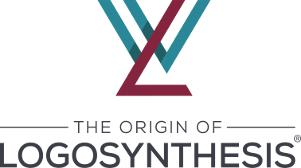Do we need an Inner Child?
(longread inspired by Harlow Broomes)
I’m reluctant when it comes to celebrating or even using the expression ‘Inner Child’. The popularity of the concept is based on a misunderstanding, which is easily resolved from a Logosynthesis’ point of view. You’ll see that it makes sense to fully integrate that Child, freeing the energy bound in it – in the service of your mission.
The term Child ego state, which in some models is called the Inner Child, was originally coined by Eric Berne, a Canadian psychoanalyst and the founder of transactional analysis, also known as TA.
The original model of ego states, published in 1961 in Berne’s book ‘Transactional Analysis in Psychotherapy’ contained a three ego-state model with a Parent, a Child and an Adult, in which only the Adult is in contact with the here-and-now. The Parent is a container for all messages given from the environment, especially the parents, and the Child ego state holds all reactions to these messages, stored at the level of a child’s development during the years.
This idea of ego states inspired me in an important part of Logosynthesis theory. Frozen representations of the outside world are entangled with frozen reaction patterns from the past. In Logosynthesis, these phenomena are considered as energy structures that can be resolved with the help of the power of words. After a structure or an aspect thereof has been neutralised or eliminated, the person will be more in contact with their inner resources – what we call Essence – as well as with the reality of their environment. In TA one would say that the Adult ego state is cathected.
In the context of Berne’s original model we do neither need energy stored in a Parent, nor in a Child ego state. How come that the Child ego state became so important and so popular? This has to do with Berne’s second model, the functional model of ego states. This concept describes ego states not as frozen energy patterns, but as functions that must be fulfilled to lead a healthy life. The Adult represents clear reasoning, the Parent stands for taking care and setting limits. The Child stands for adaptation, rebellion as well as a creative state, with a spontaneous, natural curiosity as well as a capacity to react to the environment in new, unexpected ways.
In the sixties, this concept of a creative, curious Child conquered the world. This victory was easy after years of Parental repression and overemphasis on the rational Adult function in the fifties, and it’s one of Eric Berne’s great merits that he was able to translate a deeply felt human potential into a single, easy-to-grasp model. However, the simplicity of the model led to a further simplification that connected creativity, intuition and curiousness to childhood, with the implicit conclusion that we all must maintain, reaccess or even cultivate this childhood ‘part.’
In Logosynthesis theory, this curious, creative, laterally thinking aspect of our being is nothing but our original Self, manifested by Essence, the eternal power beyond our body and mind on this earth. With birth, our original Self has to find a place in the energy field around us, represented by parents and a family.
On this path a newborn meets chances and limitations. The limitations will curb the potential present in the original Self, and much of its energy is frozen in representations of a limiting, shaming, fear-inducing, traumatising outside world as well as in the corresponding reactions of a shattered child.
This process is dramatic, and it’s a key purpose of the helping professions to heal these wounds by freeing the energy bound in these structures. However, it doesn’t make sense to free the life energy and at the same time to hold on to the concept of an Inner Child. The Child that must be freed is nothing but the flow of free energy.
It’s misleading to associate this powerful healing process with freeing a potential ascribed to a certain period of life – childhood – especially because it’s often thought that the needs corresponding to that period must also be fulfilled. Often people assume that childhood needs must be met for the creative Child ego state to function. This assumption keeps adult people in a state of unnecessary dependency.
The spontaneous, intuitive, lively, dynamic Child ego state that became so popular is a state of thoughts, emotions and behaviours has nothing to do with the past that it seems to refer to in its name.
Logosynthesis reduces the need of paying attention to childhood needs: strokes, respect, recognition, love. They’re simply not relevant the way they once were – after the treatment. In the healing process itself, especially in the beginning, it’s extremely important to pay attention to the needs that were not met – in offering a strong and stable working alliance.
Once the free flow of your life energy is restored, you can let go of the frozen structures associated with the Child ego state, and you’ll be able to reconnect to the Love that comes with Essence.
Then you can finally grow up to become that responsible adult person you were meant to be from the beginning – with your own, unique mission.
